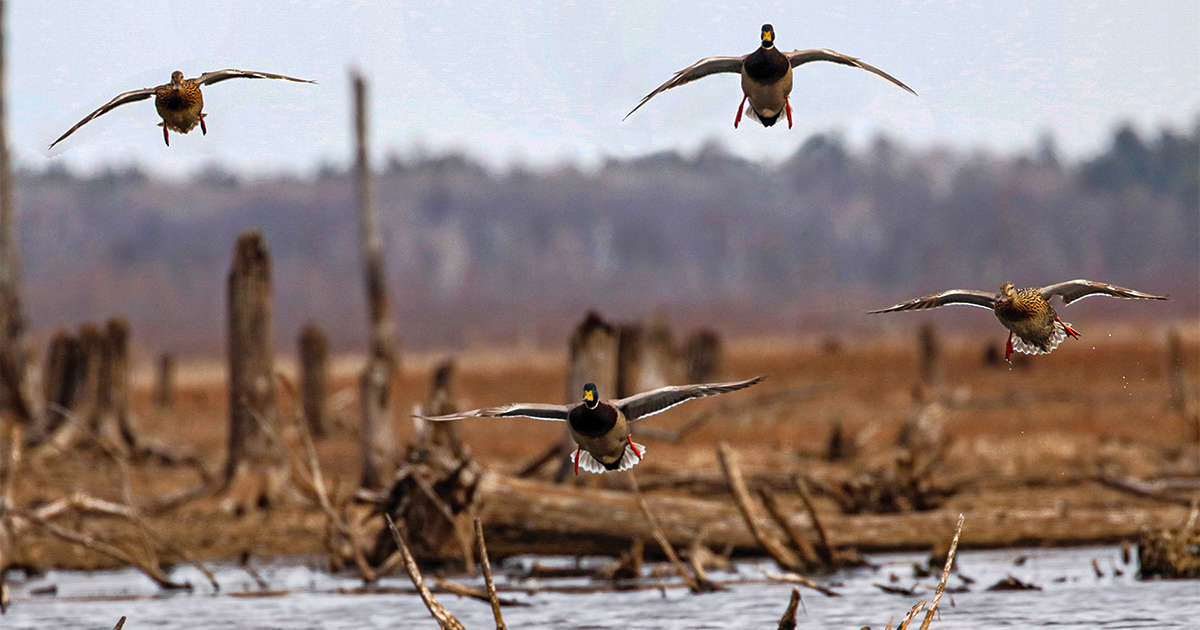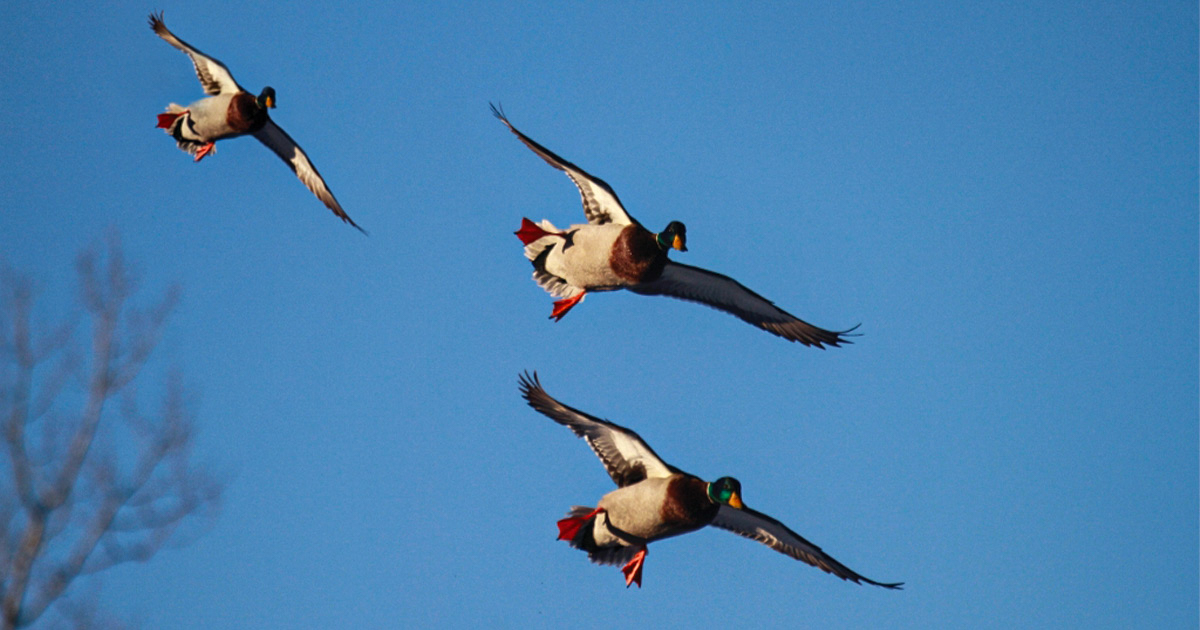Migration Alert: Waterfowl Managers and Hunters Optimistic Across the Great Plains States
Sept. 21, 2023 – Central Flyway Preview – Great Plains
Sept. 21, 2023 – Central Flyway Preview – Great Plains

Abundant snowfall and timely rains across northern portions of the Prairie Pothole Region on the U.S. side of the border created the conditions necessary to support a season of good duck production within key states in the Central Flyway. Here is a look at what hunters can expect to see as we enter fall and prepare for the upcoming waterfowl hunting seasons.
When the North Dakota Game and Fish Department (NDGF) conducted its annual summer duck brood survey, it observed a 79 percent increase in the number of broods compared to last year, thanks in part to a heavy snowpack in key areas with suitable habitat and rainfall events in May and June that provided a much-needed boost to wetland conditions to a state that has been extremely dry. Combine these improved wetland conditions with a strong number of breeding ducks that stopped in the state this spring, and hunters should expect to see a better-than-average flight of ducks come out of North Dakota this fall.
“Our fall flight index from North Dakota is up about 23 percent from last year, and that makes it comparable to some pretty good years, like 1994 and 2020,” explains Mike Szymanski, NDGF migratory game bird management supervisor. “We think the outlook for duck hunting in North Dakota should be pretty good, and the outlook is also pretty good for those regions that receive ducks from North Dakota.”
Szymanksi says that dry conditions across the Canadian portions of the Prairie Pothole Region likely impacted duck production in that region, but hunters throughout the Central Flyway can expect to see average to above-average numbers of Arctic-nesting waterfowl species, including snow geese, lesser Canada geese, and white-fronted geese. Canada geese that nest in North Dakota should also be abundant this fall, he says.
It is a similar situation across portions of eastern South Dakota, where snowpack and timely rains impacted key areas, including those regions that contain highly productive nesting and brood-rearing habitat.
“The rains that fell in June and July certainly helped some of our late-nesting species, like blue-winged teal and gadwall,” says South Dakota Game, Fish and Parks Chief Waterfowl Biologist Rocco Murano. Hunters who have been participating in youth and early Canada goose seasons are reporting good populations of blue-winged and green-winged teal, shovelers, mallards, pintails, gadwalls, and wood ducks.
“Overall, I think that hunters in the Dakotas and hunters that depend on ducks from the Dakotas can expect to see good production out of these two states,” Murano says. “Our early hunting should be good here, and we should be sending good numbers of birds south when the time comes.”

Even though Nebraska had abundant snowfall across much of the western and central parts of the state, the state remained abnormally dry heading into spring, says John McKinney, waterfowl program manager with the Nebraska Game and Parks Commission. Rainfall during the summer raised water levels in some areas, but duck production in traditional areas like the Sandhills appears to be down significantly.
“So far, we’ve banded far fewer ducks on the Valentine National Wildlife Refuge this year than we did last year, though the summer rains have provided opportunities for the ducks to spread out a bit more compared to last year when the dry conditions had birds more concentrated,” McKinney says. “During our statewide goose-banding efforts, the proportion of juvenile geese banded was 41 percent below our 10-year average. This is primarily due to the continuation of drought in eastern Nebraska.”
Still, McKinney suspects that the coming season will be an improvement over last year. He cautions that limited water in many areas may cause waterfowl to bypass the state.
“Habitat conditions can change quickly, however, so I am hopeful that we will receive more precipitation before the regular duck season opens,” McKinney says.
Early season waterfowl reports from Kansas suggest wide-ranging habitat conditions across the state.
Tom Bidrowski, a migratory game bird specialist with the Kansas Department of Wildlife and Parks, says that water levels in parts of northeast Kansas are average, while portions of the south-central part of the state appear lush and green. Widespread dry conditions persist in other parts of the state, however, and will likely create problems for hunters at popular state wildlife areas. Still, existing vegetation and food resources will attract waterfowl if water conditions improve.
“We’ve seen a great moist-soil plant response, so if we get water, things could be pretty good,” Bidrowski says. “Until then, low water levels are going to help concentrate ducks and duck hunters. Scouting will be pretty important in order to find those little hidden gems of water away from the crowds.”
A variety of wetland conditions and water levels in reservoirs will greet Oklahoma hunters this fall, says Paxton Smith, a migratory bird biologist with the Oklahoma Department of Wildlife Conservation. Those areas that have water have attracted teal and other early migrating waterfowl in recent weeks, and hunters will need to continue to scout this fall to find the best water and food conditions, as well as concentrations of birds.
“We depend a lot on the weather, not only to drive birds down here, but also to provide the conditions we need to stop ducks and geese on their way south,” Smith says. “I’m encouraged by what I’ve seen and heard of production in the Dakotas, so I think if we can get a little help from Mother Nature, we could see some good hunting opportunities where we have water in the state.”
Stay up to date with the latest migration information.